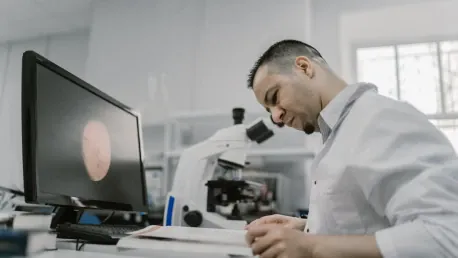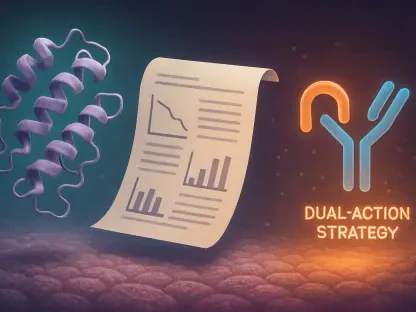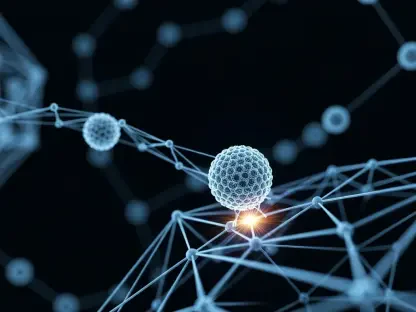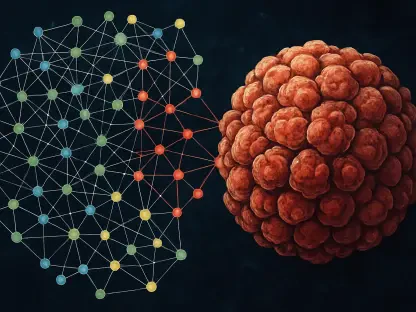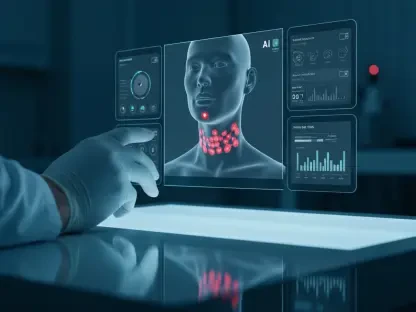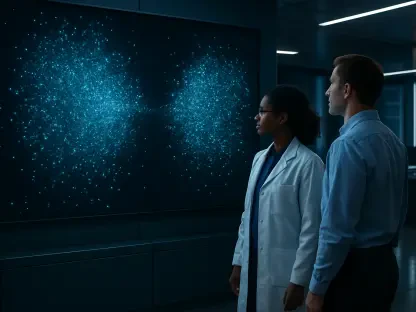The eruption of Mount Vesuvius in AD 79 led to the sudden destruction of Pompeii, a bustling Roman city located southeast of modern-day Naples in Italy’s Campania region. This catastrophic event emitted lethal gases and ash, suffocating most of Pompeii’s population and burying the city in layers of ash and pumice. Excavations of Pompeii, which began in 1748 and were significantly advanced by archaeologist Giuseppe Fiorelli in 1863, have long provided a window into the life of a Roman city caught mid-disaster. Fiorelli’s method of creating plaster casts preserved 104 body shapes, offering a somber snapshot of Pompeii’s last moments. These plaster casts, along with the scenes they depict, have been instrumental in narrating the life and demise of the city. However, recent advancements in ancient DNA analysis are reshaping these narratives, revealing surprising insights about the genetic makeup, relationships, and identities of Pompeii’s residents, ultimately providing a more nuanced understanding of the demographics and interactions within the city.
Advances in Excavation and DNA Analysis
Although Fiorelli’s technique preserved the physical forms of the victims, the softer tissues within these casts had long since decomposed. In recent years, modern scientific techniques have provided unique opportunities to revisit these casts. Researchers engaged in the restoration of these casts have successfully retrieved bone fragments from within, enabling DNA extraction and genetic sequencing. These advancements have challenged previously held assumptions about the interpersonal relationships and identities of Pompeii’s residents depicted in these casts.
In May 2023, a study published in ‘Current Biology’ detailed these breakthroughs, revealing key insights into the genetic diversity and interpersonal connections within Pompeii. Initiated as part of a restoration project by the Archaeological Park of Pompeii to refinish 86 of the original 104 casts, this study was a collaborative venture. In cooperation with genetics experts, notably Professor David Reich of Harvard Medical School, park directors, and anthropologists, the team created a genetic cohort. Their efforts illuminated the composition of Pompeii’s society, considerably transforming the understanding of the individuals who inhabited the city at the time of its destruction.
Unfounded Assumptions and the Reality Uncovered
Earlier narratives built around Pompeii’s casts often relied on physical positioning and apparent visual cues. For instance, a cast depicting an adult wearing a bracelet and holding a child led observers to believe they were mother and child. Similarly, bodies found together were presumed to be family units—often suggested to be siblings or parental pairs. However, genetic analysis invalidated these assumptions. The analysis showed the bracelet-wearing adult and the child intertwined in their final moments were not maternally related; the adult was a male and genetically unrelated to the child. These results indicate the deeper complexity of Pompeii’s societal structures which were previously oversimplified by visual cues alone.
The excavation of Fiorelli’s plaster casts had long driven the presumption that the relationships within these casts could be discerned merely from their proximity or the visual context in which they were found. However, the recent DNA findings demonstrate the intricacies of Pompeii’s social networks, revealing connections that were not necessarily biological or easily interpreted from physical arrangements. This reshaping of Pompeii’s historical narrative underscores the importance of integrating scientific methods with traditional archaeological approaches to uncover the true nature of ancient societies.
A Cosmopolitan City’s Genetic Diversity
The DNA analysis revealed that Pompeii, much like other significant nodes across the Roman Empire, was a diverse and multicultural city. Its residents included individuals of eastern Mediterranean descent, consistent with broader patterns of mobility and cultural exchange within the expansive reach of the Roman Empire. The city’s coastal location and status as an important port facilitated ongoing interactions with diverse cultures and peoples. Ships from places like Alexandria in Egypt were common sights, pointing to a bustling and varied populace.
Dr. Michael Anderson from San Francisco State University lauded the study for dismantling outdated Eurocentric narratives and confirming that the Roman world was a melting pot of ethnicities, reflecting extensive immigration and cultural assimilation. Pompeii’s genetic portrait showcases a lively urban setting very much reflective of Roman integration practices, including enslavement and subsequent manumission, where freed slaves became integrated citizens. This genetic mosaic uncovered through modern examinations challenges long-held perceptions, revealing Pompeii as a hub of international diversity where various cultures, ethnicities, and traditions intermingled seamlessly.
The depositional characteristics of Pompeii further support the city’s diverse makeup. Archaeological finds, such as imported goods, artworks, and architectural elements, indicate a society rich in cultural exchanges and influences. These insights paint a vivid picture of Pompeii not merely as a Roman city but as a microcosm of the broader Mediterranean world, where trade, migration, and social integration were deeply interwoven into the fabric of everyday life.
Nuances in Family Structures and Social Relationships
Pompeii’s exhibited family structures challenge contemporary assumptions about familial roles and connections. Unlike the modern nuclear family, Roman households were inclusive of non-blood relations, incorporating adopted children, freed slaves, and others who played significant roles within the household. Professor Steven Tuck of Miami University emphasized that the DNA evidence reiterates how Roman definitions of family extended beyond mere biological ties. This complexity is essential to understanding the layered social dynamics of Pompeii.
For instance, in the House of the Golden Bracelet, genetic analysis debunked the presumed narrative of a nuclear family dying together. Instead, the analyses revealed a non-related adult male trying to protect a child. Similarly, at the House of the Cryptoporticus, two individuals whose bodies were found together were initially thought to be close female relatives or lovers. The DNA evidence revealed that one was a young male, thus reshaping our understanding of their relationship and debunking previous hypotheses based on the casts’ physical arrangements.
The fresh light shed on these familial impersonations indicates a necessity to reinterpret social bonds and connections through a more nuanced lens. With the aid of ancient DNA testing and cooperative scientific endeavors, contemporary understandings now better appreciate the complexity and variability of Roman household compositions. This redefined narrative reflects not only the diversity of Pompeii but also its residents’ varied social frameworks.
Archaeological Context and Methodological Advancements
The significant modern restoration of original casts began in 2015 by the Archaeological Park of Pompeii. Using X-rays and CT scans, researchers identified the integrity and contents of these casts, discovering that only fragments of the original skeletons remained. Research methodologies evolved, including these advanced imaging techniques. These efforts have revealed previously unknown aspects of the casts’ construction and internal composition, providing new opportunities to analyze and understand the skeletal remains trapped within.
The analysis also opened doors to a broader project aimed at reconstructing the genetic diversity of Pompeii’s entire population. By examining bone fragments and teeth extracted from damaged sections of the casts, researchers strive to create a comprehensive genetic snapshot of a Roman city from two millennia ago. This methodological breakthrough allows scientists to paint a more detailed and accurate picture of Pompeii’s population, offering insights into the daily lives, health, and ancestry of its residents.
Key advancements in technology, including high-resolution imaging and sophisticated genetic sequencing, have significantly enhanced the ability to analyze and interpret the preserved remnants of Pompeii. These methodologies bridge the gap between historical archaeology and modern science, contributing to a more complete and nuanced understanding of ancient societies. Through continuous exploration and inter-disciplinary cooperation, the evolving narrative of Pompeii serves as a testament to the power of scientific innovation in unearthing the past.
Impactful Findings and Broader Historical Understanding
Ultimately, the study has offered profound insights into Pompeii’s demographics and social structures before its untimely destruction in AD 79. Researchers from various disciplines collaborated to piece together this intricate puzzle, giving modern science a clearer view of the past. These findings serve not only to enhance our historical understanding but also to honor the individuals who perished, providing a voice to their final experiences.
The revelations, particularly about Pompeii’s diverse genetic makeup, prompt a reevaluation of ancient Roman society’s inclusivity. Reflective of Rome’s widespread trade, conquests, and cultural exchanges, Pompeii was evidently much more cosmopolitan than previously recognized. This cosmopolitan nature challenges the traditional views often perpetuated by 18th and 19th-century interpretations, promoting a more accurate representation of ancient societies.
Through the comprehensive integration of genetic research, archaeology, and anthropology, the evolving narrative of Pompeii encapsulates the rich, multifaceted nature of its ancient society. These efforts not only build a deeper historical comprehension but reaffirm the importance of cultural and genetic diversity in shaping the tapestry of human history. The meticulous study offers a profound point of reference for future explorations, setting a standard for how modern technology can reconstruct and preserve the memories of past civilizations.
